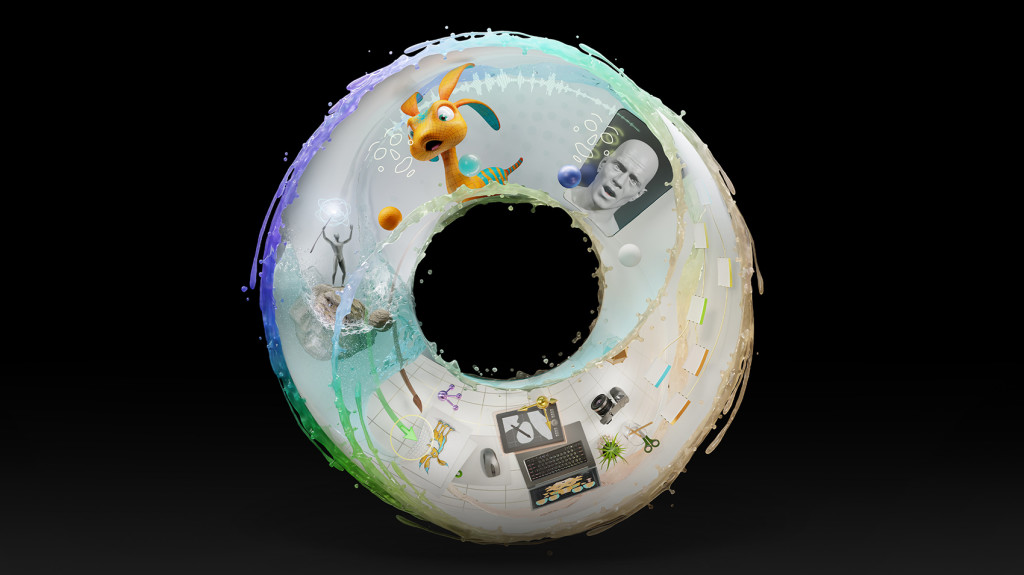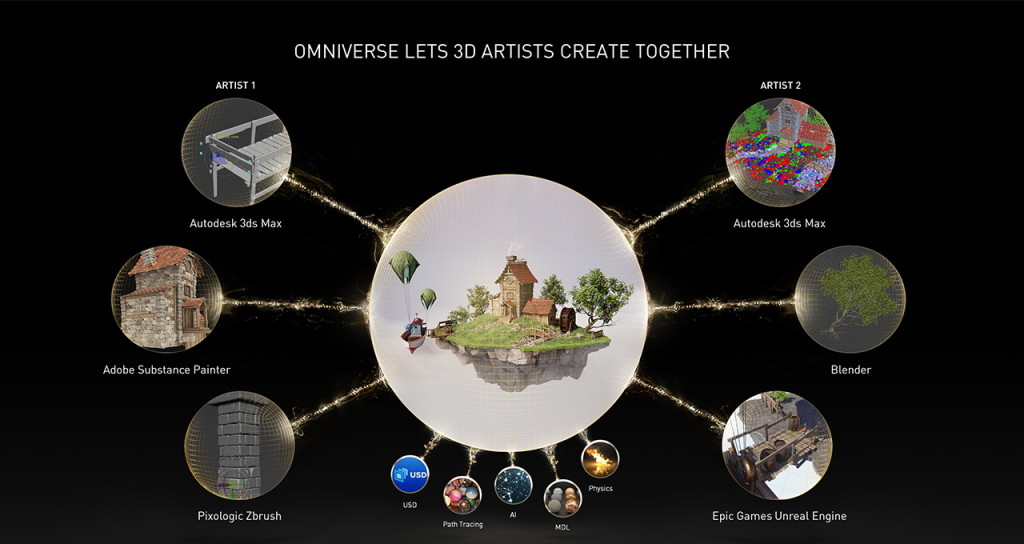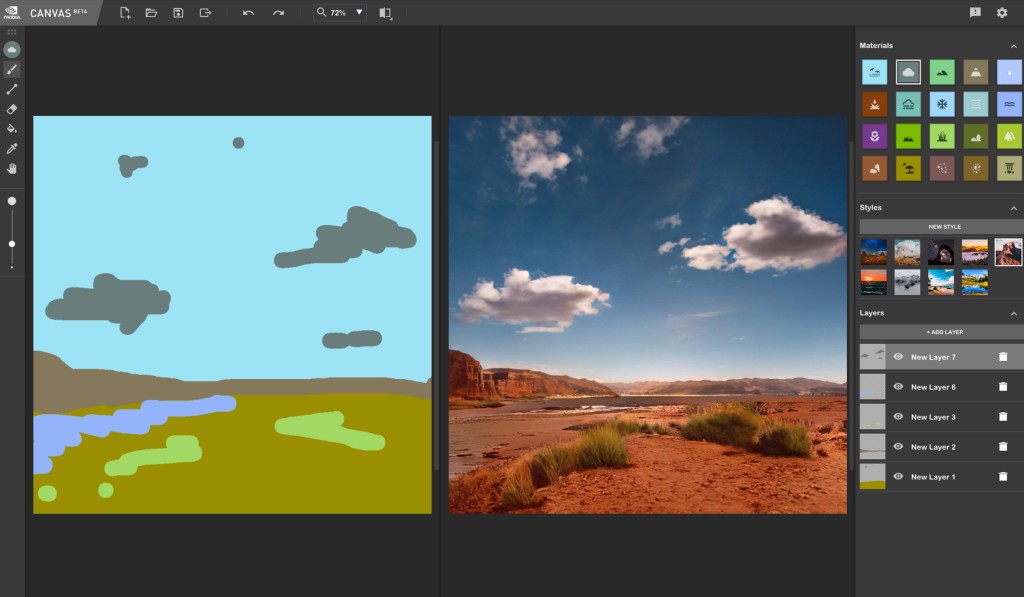It’s a simple pitch to Windows and Linux users: so long as you have a compatible RTX GPU to render, NVIDIA is going to throw an insane amount of stuff at you for free to create and collaborate. That landscape is growing – and it’s now out of beta.
It’s worth saying at a time when Apple is pushing their M1 MAX hard – if it really is 3D you want, the PC still has the edge, from games to higher-end rendering, sort of in an “absolutely no contest” way. (Other categories are more neck and neck.) But 3D production has also been pretty niche historically – which is why this push for software and use cases, even for hobbyists and education and individual art, becomes so relevant.
Suddenly, making stuff in the 3D and virtual side gets the spotlight in a week normally focused on consumers – at CES. And there’s a lot there.
Omniverse, out of beta with new goodies
Omniverse is available for free. Omniverse remains hard to describe, but once you get it, the concept is great. It’s a single platform built around industry standards for collaboration – and for discovering a lot of the tricks your GPU can pull off in the process.

There is a ton of stuff in there now for the official launch:
- Audio2Face for generating facial animations from just an audio input (using machine learning)
- Create for working with Pixar USD, including rendering
- Machinima which also makes use of AI assistance for storytelling with game assets
- Kaolin for 3D deep learning research in PyTorch
- Isaac for photorealistic robotics testing (yeah, really) complete with physics simulation
- View for photorealistic visualization
Now, not accidentally, each of these examples is cooler with rendering – hence, Omniverse itself will run on most Windows or Linux computers, but the upsell is an NVIDIA RTX GPU to get something for your eyes.
See:
https://www.nvidia.com/en-us/omniverse/creators/
That said, if you find some other folks with those RTX GPUs, you get an environment where you can work in teams and share and collaborate right on your computer. (I suspect we will also see streaming and servers as a solution for the same, depending on use case, even if that sets up NVIDIA effectively competing with itself.) You could have one artist working in Blender, another painting in Adobe Substance Painter, and another assembling in Unreal Engine with a live music score, for instance.

Omniverse also gets some significant updates as it graduates out of beta:
Audio2Face now works with MetaHuman. Audio2Face got a slew of updates, but the most interesting one is direct export to Epic’s MetaHuman tool for generating faces. I want to see your Max Headroom videos soon, y’all. (Huh, to think back in the day they had to use, uh, actual latex masks to pull that off.)
You get free machinima assets from Mechwarrior 5 and Shadow Warrior 3. I mean, this is just cool. Omniverse will also have a machinima library full of assets, and they’re licensing some excellent games so you don’t have to.
Talk about a pro/consumer overlap – machinima is seeing use even in mainstream TV productions. Apple TV (ironically) has Mythic Quest which uses a custom Unreal-powered engine built by Ubisoft.
There are other freebies and add-ons from other 3D marketplaces, too, including fabric, vegetation, water, rocks, terrain – everything you need to be Slartibartfast.
But – this! (And, hey, you can also give those beautiful figures … better dialogue. Please. Yikes. I don’t know why I ever complained about “it’s-a-meee.”)
Studio drivers and extras on Windows
NVIDIA Studio is targeted at creators and linked to Omniverse, also ready for prime time. This is probably worth a separate look with some actual OEMs, but the short version is that this is NVIDIA’s hardware + driver + software + marketing strategy under a single umbrella for creative applications. There’s nothing new about the drivers, but it seems we now get a fully-loaded app to browse, a la GeForce Now.
Again, this is for people with RTX GPUs, but the upshot is that your drivers and apps should play nice on Windows, and you get a bunch of extras. (Linux users aren’t really included here, but Linux is fully supported for Omniverse and the AI stuff, so… don’t sweat it.)
RTX GPU users can use NVIDIA Studio Drivers optimized for use with creative apps. This is only relevant to NV’s Windows drivers, though Linux supports Omniverse, anyway. Windows users get a choice between Game-Ready Drivers (GRD, poor choice of acronym) and Studio Driver (SD). Linux users get Production and New Feature branch (so Production is the stable branch). (Again, no news here, but it does seem NV has some nice new performance to boast on the latest RTX stuff.)
In addition to drivers, though, there are more freebies to add to the ones above (also for Windows, though based on AI and GPU acceleration technologies that are also available on Linux). So you’ve got NVIDIA —
- Canvas, an AI-powered painting app (with Photoshop export)
- Broadcast, which uses AI to do a lot of cool virtual background, noise removal, and other effects
- Texture Tools which is CUDA-accelerated texture file creation
Now, if at this point veteran NVIDIA users are thinking, “wow, does this mean some NVIDIA thing in my tray is going to bug me about updating and there will be a bunch of marketing screens to navigate to find something useful?” Why yes, Tammy, that is exactly right.
Unlike the gaming equivalent, though, you do get some genuinely cool stuff in the process – like a GauGAN2 AI model that lets you make your crude paintings into beautiful pictures. I can’t overstate this enough. Canvas takes your terrible MS Paint-style doodles and turns them into photorealistic images.
Canvas takes your terrible MS Paint-style doodles and turns them into photorealistic images.
NVIDIA Canvas update
Oh yeah. After 2 years straight of “living in the future” means “I can’t leave my front door because I could catch a deadly bat virus,” finally it gets to mean “oh, computers are futuristic again.”
So the pic on the right came from the doodle on the left. And the new Canvas update adds “straw, flowers, mud, dirt, and bush” plus a 4X improvement in resolution. Windows only, but any RTX GPU will do; now in beta.

About that RTX hardware..
All of this is obviously about moving hardware. NVIDIA’s announcements there were new RTX 3080 Ti laptops with 16GB GDDR6 memory, and 3070 Ti laptops, alongside partners ASUS, MSI, and Razer, shipping starting in February.
The 3080 Ti is the flagship of the two – a laptop GPU that outperforms the desktop TITAN RTX. The whole system starts at US$2499 ($1499 for the very-capable 3070 Ti).
On the desktop side, NVIDIA is offering the RTX 3050 + 8GB GDDR6 RAM, which starts at a very accessible US$249 but still offers all the Ampere architecture benefits including graphics and AI.
More info
Also worth checking is this GTC presentation from last month and why “digital twins” are also at the heart of NV’s strategy:
Oh yeah, and the other big news last month was Blender arriving with GPU acceleration on RTX:
For more:
Groundbreaking Updates to NVIDIA Studio Power the 3D Virtual Worlds of Tomorrow, Today [Press release overview with all the news]